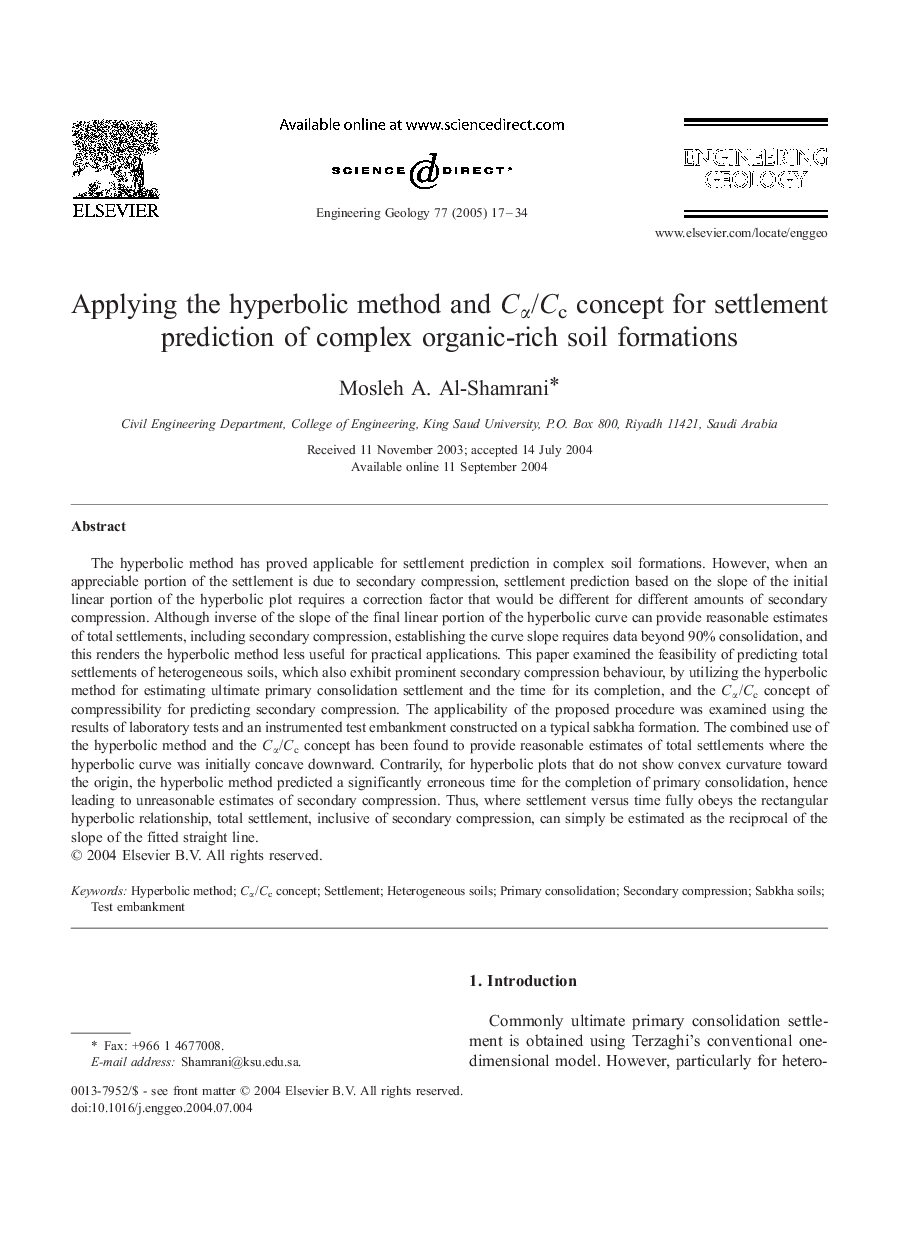| Article ID | Journal | Published Year | Pages | File Type |
|---|---|---|---|---|
| 9538098 | Engineering Geology | 2005 | 18 Pages |
Abstract
The hyperbolic method has proved applicable for settlement prediction in complex soil formations. However, when an appreciable portion of the settlement is due to secondary compression, settlement prediction based on the slope of the initial linear portion of the hyperbolic plot requires a correction factor that would be different for different amounts of secondary compression. Although inverse of the slope of the final linear portion of the hyperbolic curve can provide reasonable estimates of total settlements, including secondary compression, establishing the curve slope requires data beyond 90% consolidation, and this renders the hyperbolic method less useful for practical applications. This paper examined the feasibility of predicting total settlements of heterogeneous soils, which also exhibit prominent secondary compression behaviour, by utilizing the hyperbolic method for estimating ultimate primary consolidation settlement and the time for its completion, and the Cα/Cc concept of compressibility for predicting secondary compression. The applicability of the proposed procedure was examined using the results of laboratory tests and an instrumented test embankment constructed on a typical sabkha formation. The combined use of the hyperbolic method and the Cα/Cc concept has been found to provide reasonable estimates of total settlements where the hyperbolic curve was initially concave downward. Contrarily, for hyperbolic plots that do not show convex curvature toward the origin, the hyperbolic method predicted a significantly erroneous time for the completion of primary consolidation, hence leading to unreasonable estimates of secondary compression. Thus, where settlement versus time fully obeys the rectangular hyperbolic relationship, total settlement, inclusive of secondary compression, can simply be estimated as the reciprocal of the slope of the fitted straight line.
Related Topics
Physical Sciences and Engineering
Earth and Planetary Sciences
Geotechnical Engineering and Engineering Geology
Authors
Mosleh A. Al-Shamrani,
